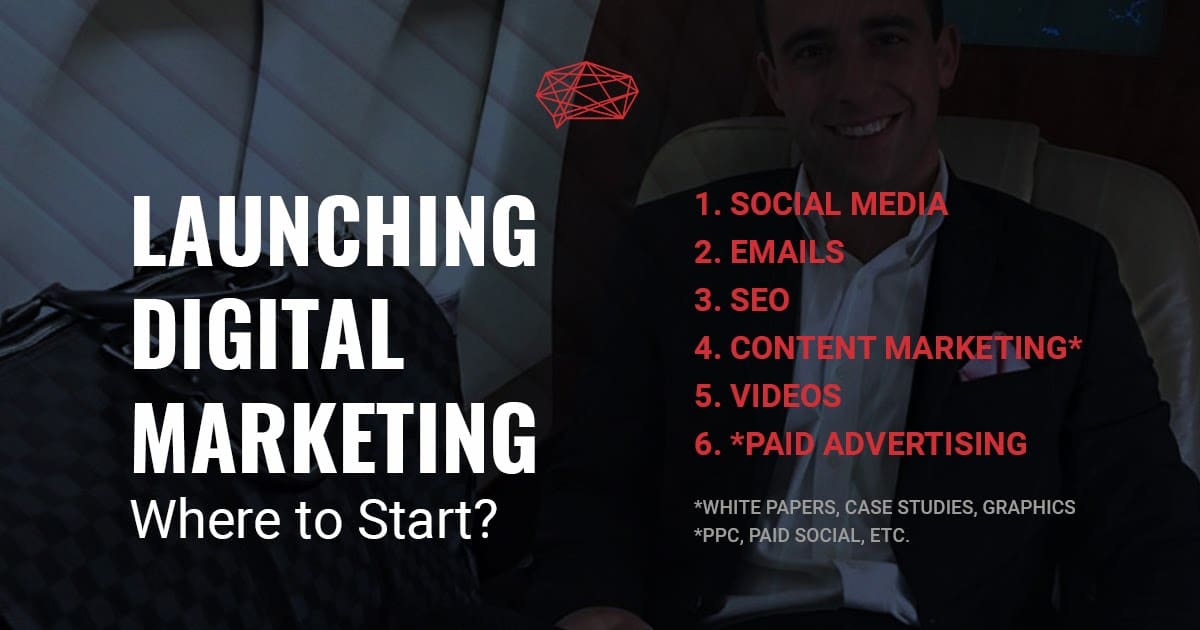How Businesses Benefit from Digital Transformation
I spent the COVID-19 pandemic balancing life as a digital marketer and a millennial consumer. What, you thought you were the only one who shopped online in 2020
Starting last March, we were forced to realize most products and services were available for purchase online. Groceries. Alcohol. Treadmills and dumbells. Jigsaw puzzles. Hand sanitizer and toilet paper.
And of course, restaurant food — takeout or delivery.
Basically, the pandemic forced someone’s grandmother who swore she would never buy groceries without squeezing the grapefruit in the produce department to rethink her shopping experience.
As a digital marketer, my team found innovative ways for business clients to identify, connect and engage online with their audience. Consumers like the grandmother who was one-click shopping for the first time. These efforts led to much-needed business revenue during trying times.
Sometimes the customer lived just a few blocks away; other times across the country.
I also had hundreds of conversations with business owners that were forced to play digital catch-up. Before the pandemic, these entrepreneurs thrived without a robust digital footprint. They wanted customers to show up at their retail shops and restaurants. Why? Because it’s what they had always done.
Truth is, in many cases, business was so good, they didn’t care about reaching consumers through Pay-Per-Click advertising, SEO, emails, social posts, blogs, videos and other digital marketing initiatives. They considered improving their digital presence, but it was more novelty than necessity.
The results were disastrous.

Businesses faced unprecedented service interruptions, leading to months of inactivity and a financial crisis which doomed companies of all industries and sizes. Check out the graphic above, a Who’s Who list of businesses that closed their doors in 2020.
And this is just national brands that filed Chapter 11 bankruptcy. Others are on the cusp of joining this list. Yelp.com estimates more than 97,000 local businesses permanently shut down during the pandemic; at the onset of the pandemic 140,104 businesses were marked temporarily closed on the website.
What’s this tell us?
Businesses that previously invested in digital marketing were at a huge advantage. According to a March 2020 survey by Statista, five percent of American consumers aged 65 and over purchased a product online for the first time. The numbers increased with each younger age group.

Why Businesses should Start Digital Marketing
The long-awaited COVID-19 vaccine is giving some Americans confidence to return to in-person activity and retail stores. The rest of us are hooked on the ease of digital.
COVID-19 forced consumers of all ages, backgrounds and economic situations to adopt faster than we would have to today’s tech. And for many of us, there’s no going back.
Will consumers move on from food delivery options such as Instacart, Postmates, Amazon Fresh and Walmart Grocery in favor of once again walking the aisles? Will they return to gyms or continue to rely on at-home solutions like Peloton or Beachbody on Demand?
Our research tells us it’s not a cost issue. It’s a lifestyle change.
BUSINESSES MUST ADAPT, TOO
Here’s what business adaptability looks like in 2021 and beyond: You don’t need 1,000 stores or hundreds of outdoor billboards across the U.S. to reach millions of consumers.
Consumers can be found online all hours of the day, making digital channels even more important tools to connect companies with the people they strive to serve.
Unfortunately, not every business will make the right digital move in 2021. Some will revert back to their pre-pandemic days, forgetting to post regularly on social channels, opting to decrease SEO tactics or PPC, or just failing to stick with an overall digital strategy.

SOCIAL MEDIA: WHERE COMPANIES MEET CONSUMERS
Social media does not have a monopoly on garnering the attention of consumers. But it’s often the first touch. This continued during the pandemic.
Social posts, graphics and videos build awareness; then interest and evaluation; followed by purchases, if they’re successful.
The sales funnel doesn’t end there.
Smart businesses not only transform consumers that discover their brands into customers, but repeat customers and later, evangelists that tout products and services to their online communities.
The Sprout Social IndexTM showcases the importance of digital marketing. Its research discovered seven out of 10 Americans use social media, while half of consumers increased social media usage during the six months leading up to the pandemic.
Problem is, competition is fierce on social media. After all, your inventory of bedroom furniture isn’t as cute as a toddler or puppy! That’s why it’s important for businesses to invest in overall marketing strategies, not just random social posts.

WHAT’S NEXT IN THE WORLD OF MARKETING?
Here’s what the pandemic taught businesses about consumers: Humans are very adaptable, except when they don’t have to be.
Think about grandpa’s flip phone, the one he said he would never trade in for a smartphone. He preferred to stick with technology he already understood. Even though there are lots of cool features for the iPhone 12 Pro Max, he refused to budge.
Until his flip phone stopped flipping. Now, he’s part of the Apple gang.
Businesses also learned a lot about consumer engagement. Yes, consumers in California will order sweet bread from a Tennessee bakery they have never walked into; located in a city they’ve never visited. Not just consumers; consumers of all ages.
Before the pandemic, the average mom and pop business would not have realized they could survive, even thrive, by relying on sales sent their way due to digital marketing initiatives.
Actually, they resisted for years. Until they had no choice, other than to shut their doors.
As COVID-19 vaccines continue to save lives, I expect companies of all sizes to once again compete for the in-person attention of consumers. That’s great news. There’s nothing wrong with face-to-face marketing, as long as it suits your audience’s desires. And, it’s complemented by digital initiatives.
To accomplish this, you need a plan. The best digital marketing campaigns solve problems, leveraging technology and creating initiatives to connect companies and consumers.
I know plans can change, but it’s important to create a digital strategy. If not, you’re bound to waste time and resources.

